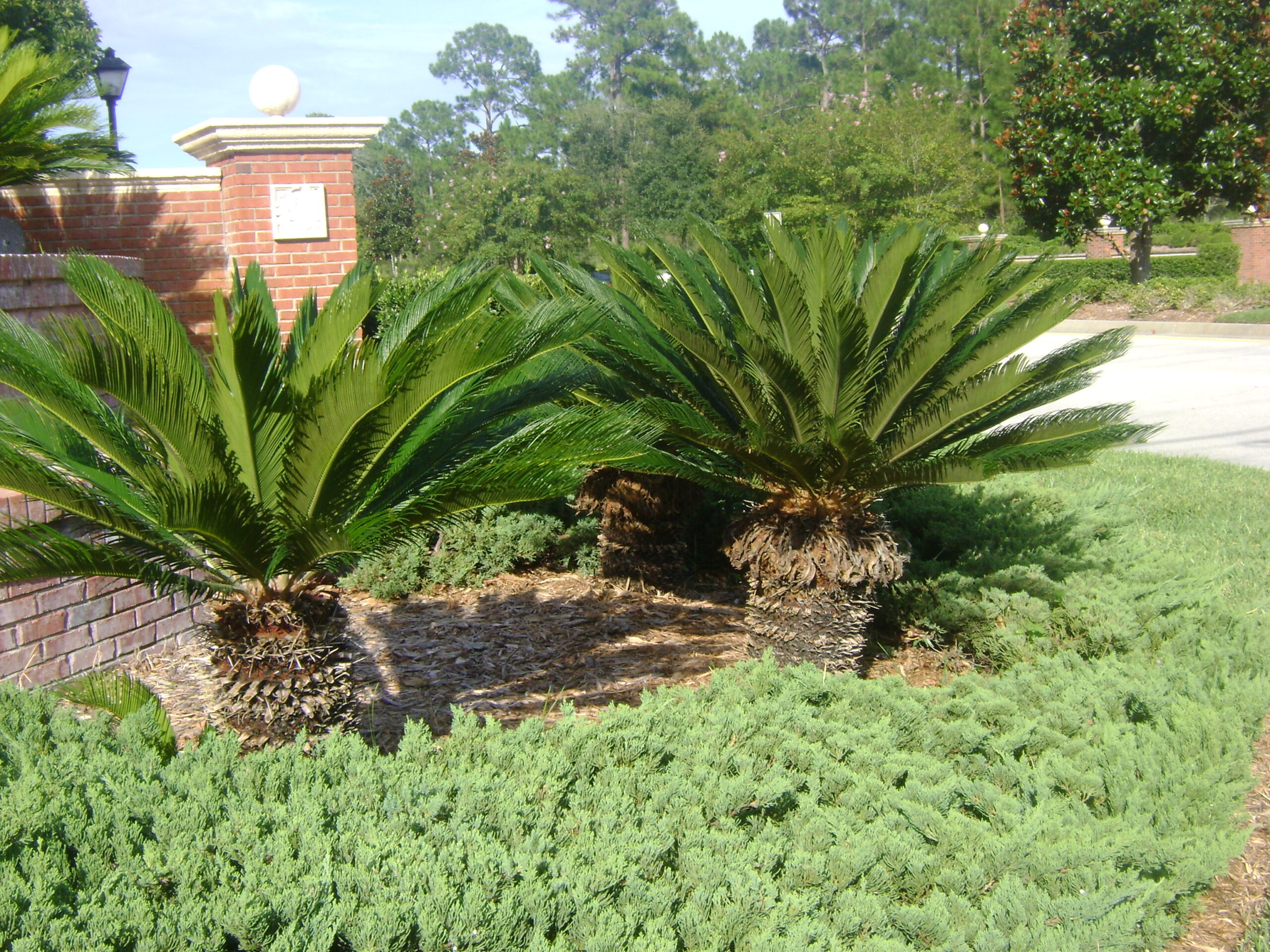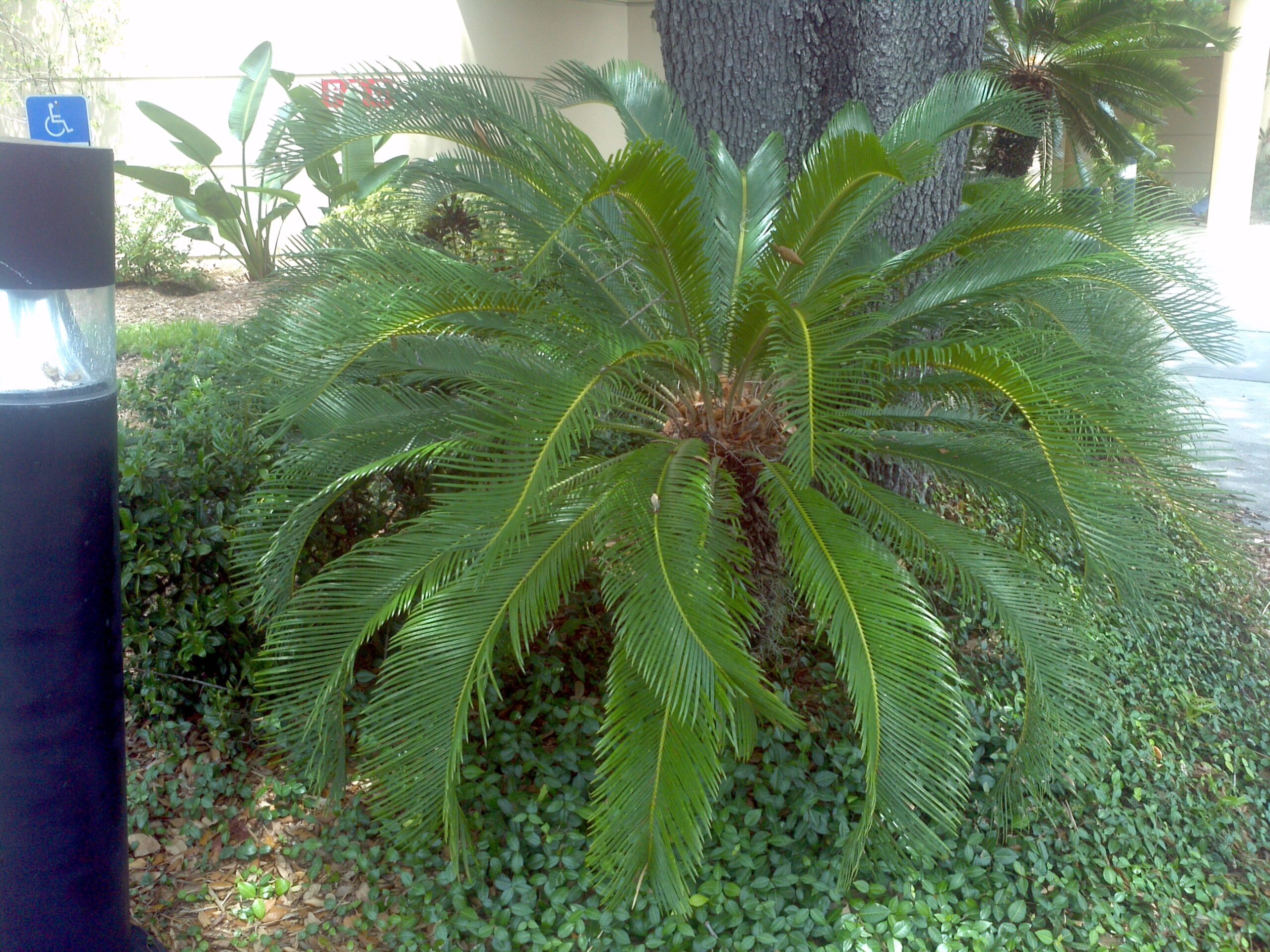The king sago palm isn’t really a palm tree at all. This ancient plant is actually a cycad, a tree documented in the fossil record back to the time of the dinosaurs. Although it resembles a palm in appearance, the sago is more closely related to pine trees and other conifers.
Its unique appearance has made the king sago popular as a landscape plant. Even very immature specimens will display a full crown of “fronds.” The king sago has a short, barrel-like spiked trunk topped with long, bright green and spiny branches. As the king sago grows, the trunk will often bend or curve in unique and eye-catching ways. After ten or more years of cultivation, male plants produce large and striking pollen cones that emerge from the center of the trunks.
This hardy plant thrives with care and lives with some neglect. Although it can be cultivated in full sun or shady environments, partial shade encourages larger frond growth. Once it is fully established it can tolerate drought conditions and is salt resistant. It can be grown as a foundation plant in gardens or indoors as a potted palm.
The king sago is a unique and worry-free option for experienced and novice gardeners alike.
nd care for—it will bring your landscape up to the Royal Level, especially if you add an oasis-like pool.


